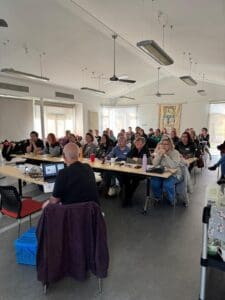Welcome to the Wild Side: Exploring the Animals of the Macedon Ranges
Welcome, nature enthusiasts, to an exciting journey into the heart of the Macedon Ranges! The Macedon Ranges Wildlife Network is thrilled to bring you this series exploring the incredible array of animal life that calls our beautiful region home 1. Our network is dedicated to the rescue, rehabilitation, and education surrounding the native wildlife in the Macedon Ranges Shire and its surrounding areas, and we believe that understanding these creatures is the first step towards protecting them 1.
The Macedon Ranges is a treasure trove of biodiversity, boasting a rich tapestry of fauna species 2. From the towering eucalypts that provide shelter to the smallest insects that pollinate our gardens, our environment supports a complex and interconnected web of life 3. This series will delve into the fascinating world of our local animals, highlighting their unique characteristics, their vital roles in the ecosystem, and the challenges they face in a changing world. We will be drawing upon resources from the Macedon Ranges Shire Council environment page to bring you accurate and engaging information 3.
Understanding the animals around us is crucial for their survival. Each creature, from the iconic kangaroo to the elusive platypus, plays a part in maintaining the delicate balance of our natural environment. By learning about their habitats, their diets, and their behaviors, we can better appreciate their significance and contribute to their conservation 5. Many of these species are facing threats, some even classified as threatened or endangered, making our understanding and action all the more important 2.
In the posts that follow, we will dedicate each entry to a specific animal, providing detailed insights into their lives. You can expect to learn about what they look like, where they live within the Macedon Ranges, what they eat, how they behave, their current conservation status, and most importantly, how you, as a member of our community, can help protect them.
The Importance of Our Local Fauna
The Macedon Ranges ecosystem is a vibrant and intricate network where each animal group plays a vital role. Mammals, from the largest kangaroos to the smallest possums, contribute to seed dispersal, soil aeration through burrowing, and form crucial links in the food chain 6. Birds, with their diverse feeding habits, act as pollinators, seed dispersers, and predators of insects, helping to control populations and maintain plant diversity 6. Amphibians, like frogs and toadlets, are indicators of environmental health, and their presence reflects the quality of our waterways and terrestrial habitats 6. Even insects, often overlooked, are essential for pollination, nutrient cycling, and as a food source for many other animals 3. The presence of a top predator such as the Powerful Owl indicates a healthy population of its prey, demonstrating the interconnectedness of the food web 2. This owl relies on possums and gliders for sustenance, suggesting that the well-being of these smaller mammals directly impacts the owl’s survival 6.
Unfortunately, the Macedon Ranges is also home to a number of threatened and endangered species 6. The repeated mention of species like the Powerful Owl, Brush-tailed Phascogale, Greater Glider, and Brown Toadlet across various sources highlights the vulnerability of our local wildlife 3. Factors such as habitat loss, introduced predators like foxes and cats, and the impacts of climate change are putting immense pressure on these fragile populations. The fact that the Macedon Ranges Shire represents a significantly higher volume of wildlife rescue cases compared to other regions in Victoria underscores the challenges our native animals face 1. Protecting these species is not just about preserving individual animals; it’s about ensuring the health and resilience of the entire ecosystem for future generations.
Navigating This Series
Over the coming weeks and months, we will be publishing individual blog posts, each dedicated to a fascinating animal found within the Macedon Ranges. In each post, we will explore several key aspects of the animal’s life, providing you with a comprehensive understanding of its place in our local environment. We will delve into what each animal looks like, helping you identify them if you are lucky enough to spot them in the wild. We will also describe their preferred habitats within the Macedon Ranges, giving you an idea of where you might encounter them. Understanding their diet will shed light on their ecological role, and learning about their behavior will offer insights into their daily lives. Crucially, we will discuss their current conservation status, highlighting any threats they face. Finally, and most importantly, we will provide practical ways in which you, as a member of our community, can contribute to their protection and survival.
A Snapshot of Our Wildlife
To give you a glimpse of the incredible biodiversity we will be exploring, here is a table summarizing the conservation status of some of the locally significant species found in the Macedon Ranges:
| Common Name | Scientific Name | VIC Status | FFG Status | EPBC Status |
| Powerful Owl | Ninox strenua | VU | Listed | |
| Brush-tailed Phascogale | Phascogale tapoatafa | VU | Listed | |
| Greater Glider | Petauroides volans | VU | ||
| Brown Toadlet | Pseudophryne bibronii | EN | Listed | |
| Yarra Pygmy Perch | VU | Listed | ||
| Platypus | Ornithorhynchus anatinus | |||
| Wombat | ||||
| Koala | Phascolarctos cinereus | |||
| Eastern Grey Kangaroo | Macropus giganteus | |||
| Australasian Bittern | Botaurus poiciloptilus | EN | Listed | EN |
| Australian Bustard | Ardeotis australis | CR | Listed | |
| Barking Owl | Ninox connivens | EN | Listed | |
| Swift Parrot | Lathamus discolor | EN | Listed | EN |
| Regent Honeyeater | Xanthomyza phrygia | CR | Listed | |
| Eastern Barred Bandicoot | Perameles gunnii | EW | Listed | EN |
| Spot-tailed Quoll | Dasyurus maculatus | CR | Listed | |
| Leadbeater’s possum | Gymnobelideus leadbeateri | EN | Listed | EN |
Note: Conservation status can change, and this table reflects the information available in the provided snippets 6. An empty cell indicates the status was not explicitly mentioned in the source.
Join us in the next post as we delve into the world of the majestic Powerful Owl, the apex predator of our Macedon Ranges forests.


